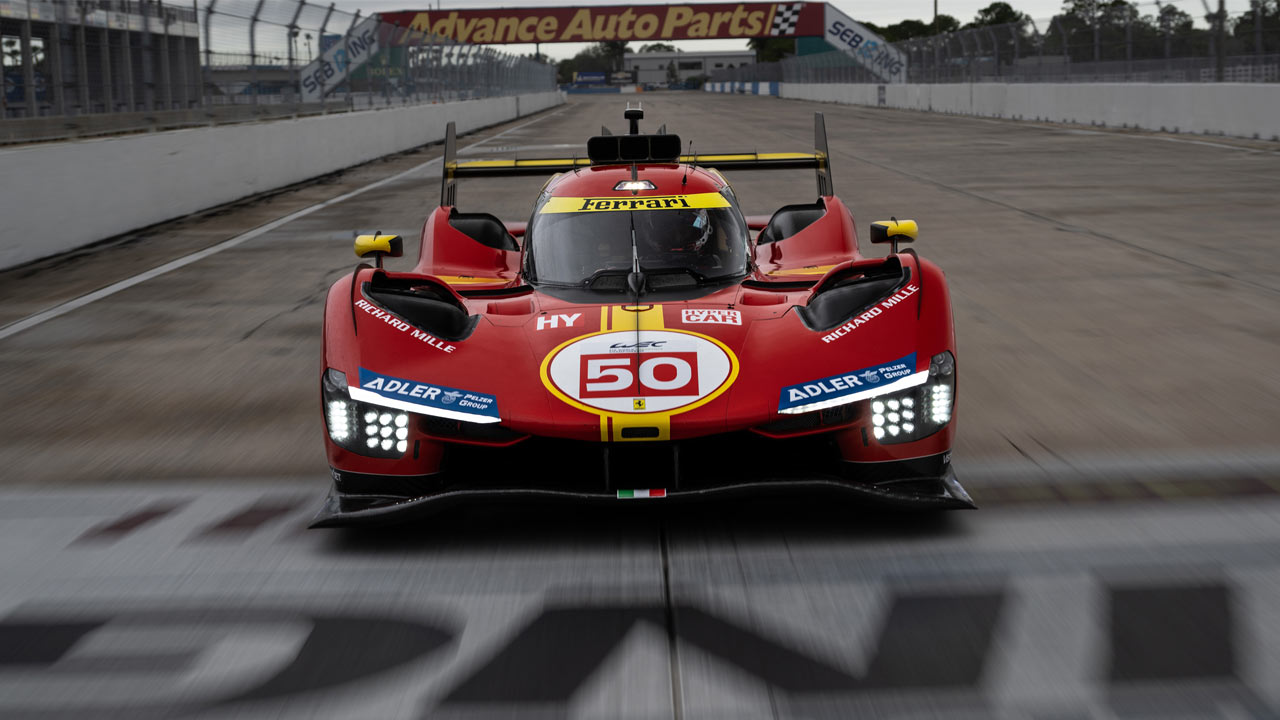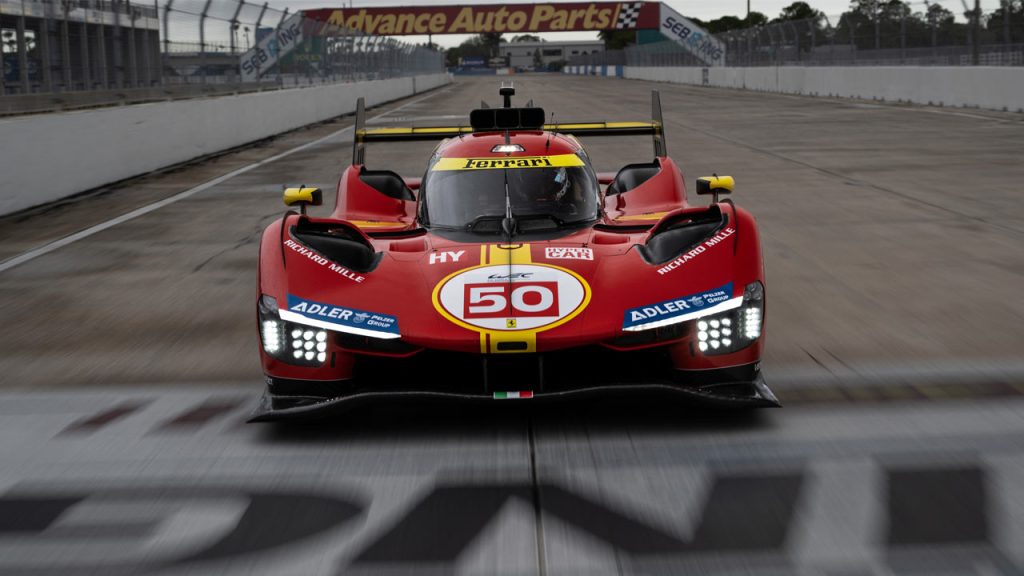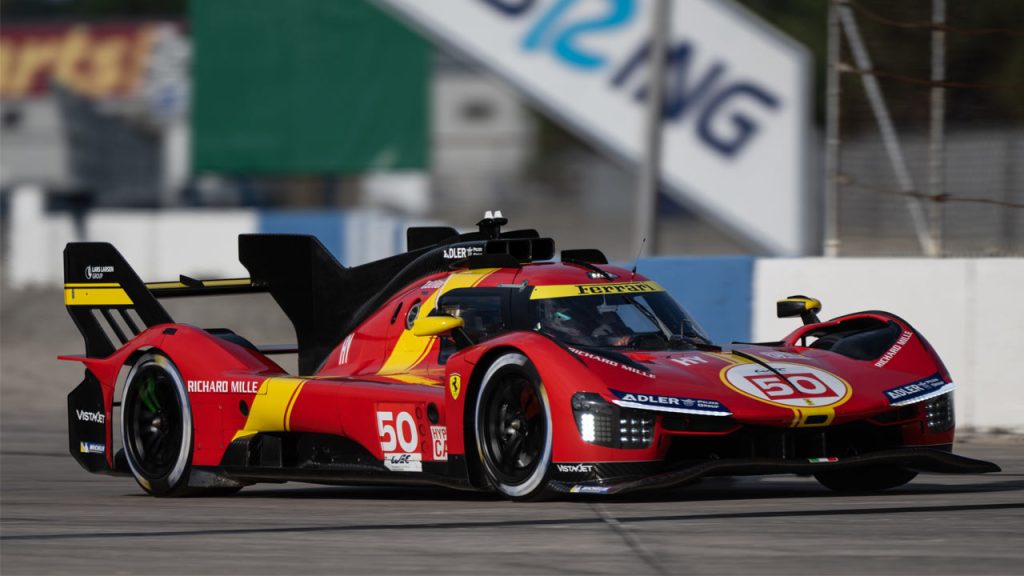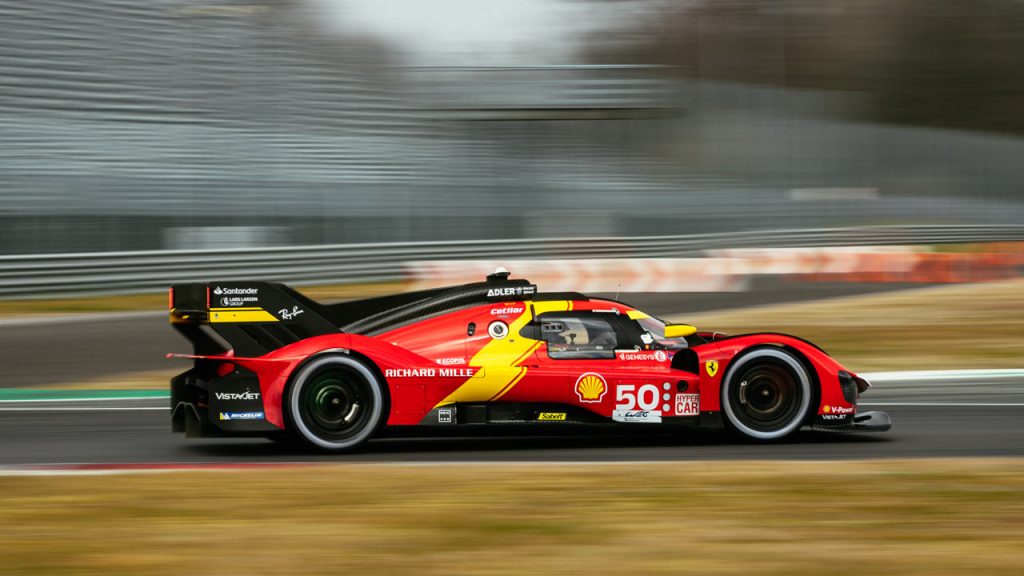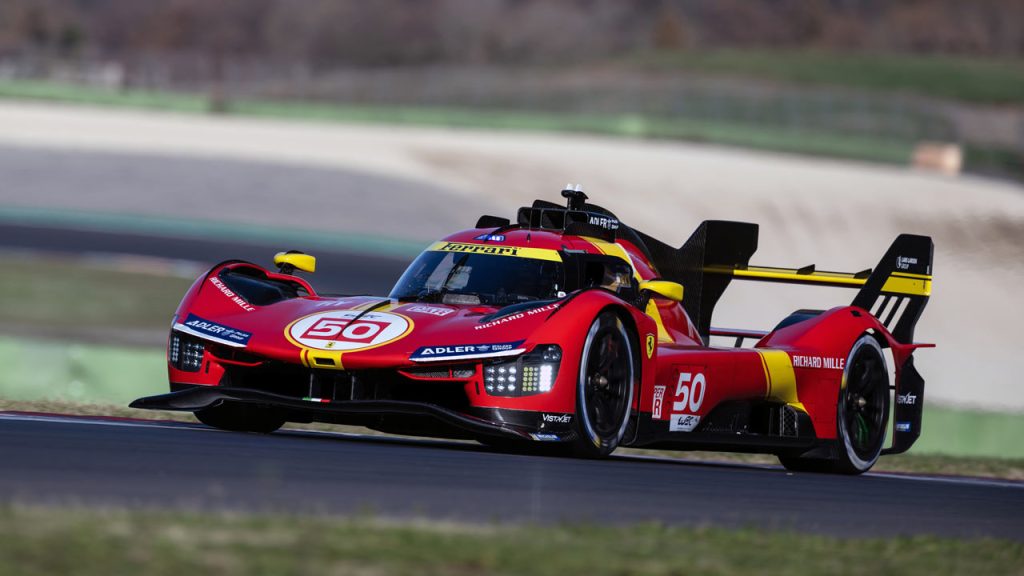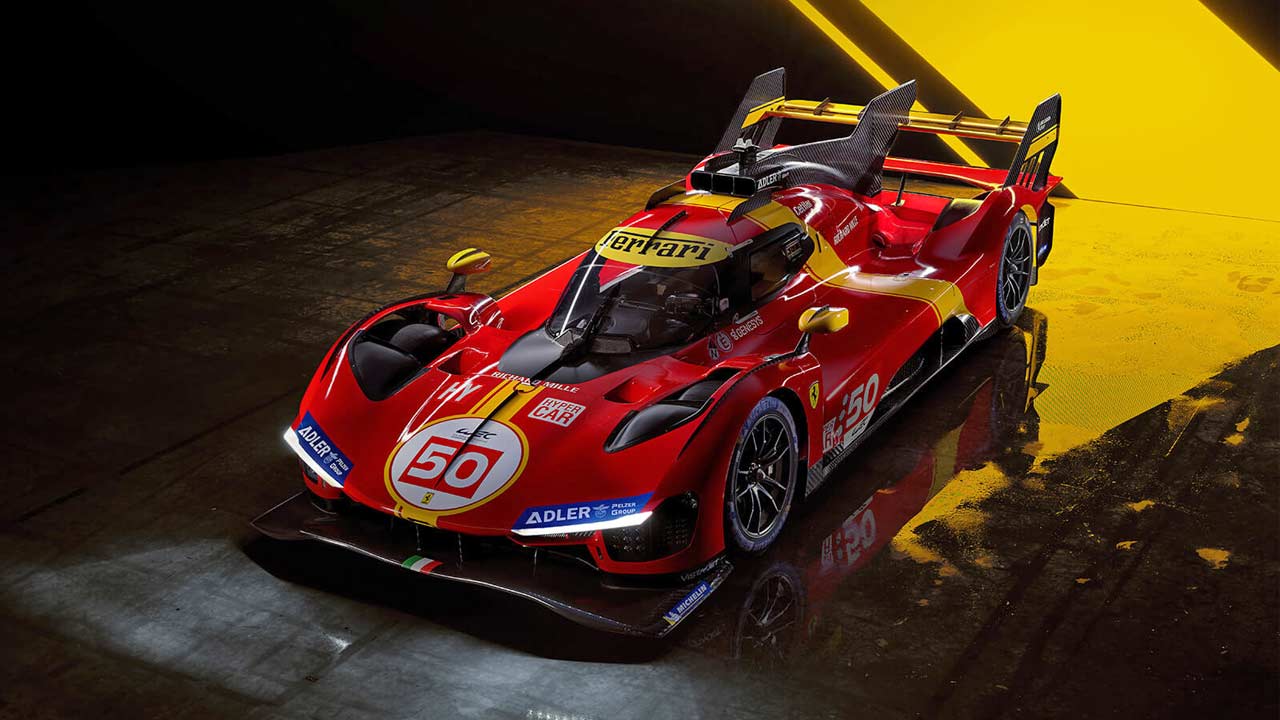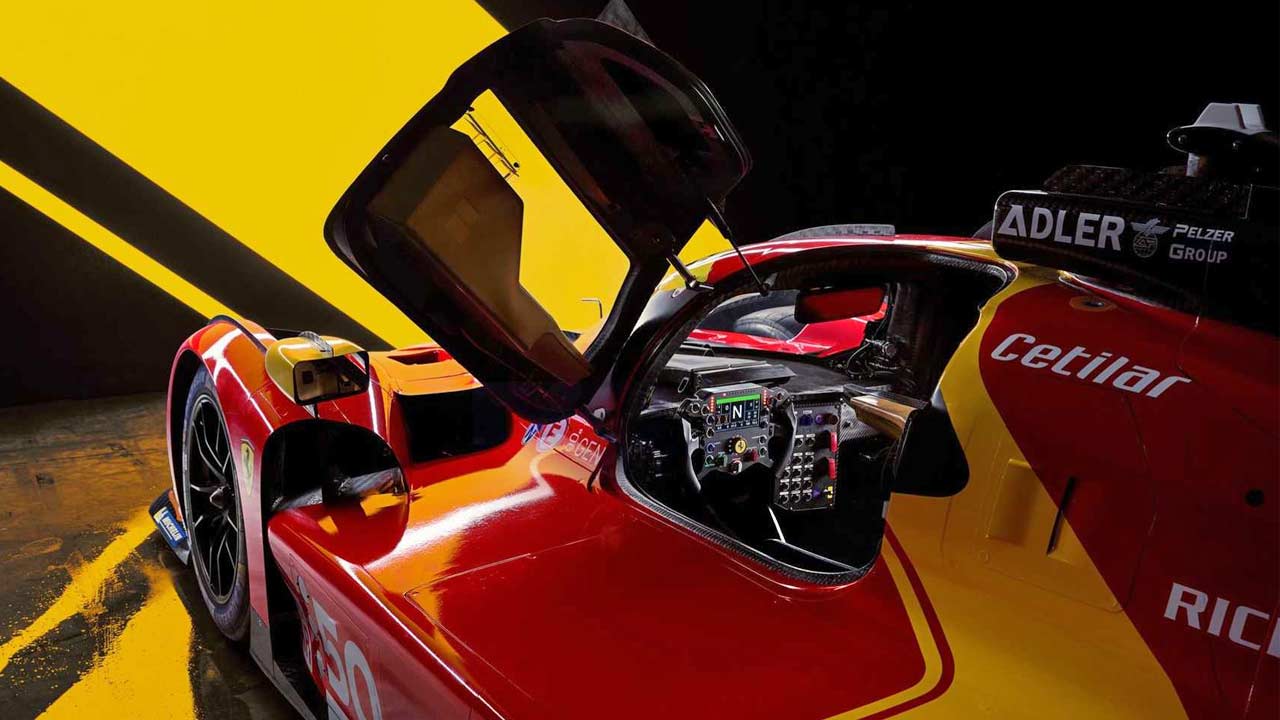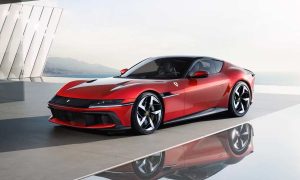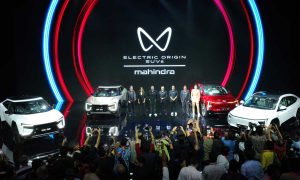As you might know, Ferrari is returning to the Le Mans this year with a new contender called the 499P—all set to make its race debut at the 1000 Miles of Sebring—the opening event of the 2023 WEC—on 17th March. Ferrari shared that the hybrid hypercar has passed all the development stages—a team effort that involved over 30 engineers.
Ferrari has built two examples that have covered a combined 24,000 km (14,913 mi) in testing. Giuliano Salvi, Ferrari GT & Sports Race Cars Race & Testing Manager says that the first development phase focused on electronic management “to coordinate the 800-volt hybrid system in a 4WD layout, comprising an electric engine at the front and an internal combustion engine at the rear. Having identified the problems, we solved them so the program could be as continuous as possible”.
There are two main strands of development: one is about performance, and the other is about reliability. “When the program starts, there are models—derived from digital simulation—that determine how the car should behave in reality,” Salvi continues. “Bringing virtual and real together is the ultimate development challenge.”
“After a test, we analyze each component, and if defects or problems are found, they are categorized. Once we have prioritized the categories, we address individual problems, modify parts, and improve the product—all of which help to improve reliability.”
“The areas that proved most challenging were the electronics, the part related to the hybrid powertrain and the 4WD system. But test after test, we improved their operation.” However, as you know, development doesn’t stop with the start of the WEC. As with any new project, each kilometre covered offers essential information. “We will be out on the track whenever we have the chance, to continue our work on reliability development and improving our competitiveness,” Salvi adds.
The hybrid powertrain is a combo of a mid-rear-mounted 3.0-litre twin-turbo V6 and an electric motor powering the front axle. The ICE is a variant of the one that powers the 296 GT3. It is coupled with a 7-speed sequential gearbox. The e-motor can offer a max output of 200 kW (272 metric hp), drawing juice from a 900-volt battery pack that is recharged during deceleration and braking. The system output, however, is capped at 500 kW (680 metric hp) as per the regulations.

Leave a Reply
Note: Comments that are unrelated to the post above get automatically filtered into the trash bin.
